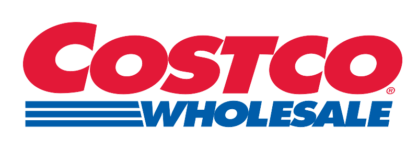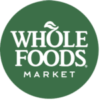
Cocoa Butter vs. Butter: Understanding the Differences and Uses
Cocoa butter and traditional butter are two popular fats used in cooking and cosmetics, but they have distinct properties, benefits, and applications. In this article, we will explore the differences between cocoa butter and butter, their uses in culinary practices, and their benefits in skincare. By the end, you will have a clearer understanding of which fat might be best suited for your needs.
Cocoa butter, also known as cacao butter, is a pure, stable fat derived from the beans of the Theobroma cacao plant. It is a pale yellow fat that has a mild chocolate flavor and aroma, making it a popular ingredient in both culinary and cosmetic products. Cocoa butter is vegan and contains no dairy, despite its name suggesting otherwise. The process of making cocoa butter involves roasting cocoa beans, grinding them into a paste, and then pressing this paste to extract the fat. The remaining solids are used to produce cocoa powder.
Cocoa butter is versatile in the kitchen. It can be used in both sweet and savory recipes, providing a creamy texture and rich flavor. It is often used in:
Traditional butter is a dairy product made from churning cream. It is rich in saturated fats and contains milk solids, which contribute to its flavor and texture. Butter is widely used in cooking and baking due to its ability to enhance flavors and create a desirable texture in various dishes.
Butter is a staple in many kitchens and is used for:
Beyond its culinary uses, cocoa butter is widely recognized for its benefits in skincare. It is commonly used in lotions, creams, and lip balms due to its moisturizing properties. Cocoa butter is known for:
In summary, cocoa butter and traditional butter serve different purposes in cooking and skincare. Cocoa butter is a versatile, dairy-free fat that adds a unique flavor and texture to dishes, while also providing numerous benefits for the skin. Traditional butter, on the other hand, is a rich dairy product that enhances the flavor of a wide range of recipes.
Choosing between cocoa butter and butter ultimately depends on your dietary preferences, culinary needs, and skincare goals. Whether you opt for cocoa butter in your vegan recipes or traditional butter for your baking, both can play a valuable role in your kitchen and skincare routine.
Cocoa butter, also known as cacao butter, is a pure fat extracted from the beans of the Theobroma cacao plant. It is produced by roasting cocoa beans, grinding them into a paste, and pressing the paste to extract the fat. This fat has a mild chocolate flavor and is used in both culinary and cosmetic products.
Cocoa butter is versatile in the kitchen. It is commonly used in chocolate making, baking as a dairy-free alternative, and for high-temperature cooking like frying and sautéing due to its high smoke point.
Traditional butter is a dairy product made from churning cream, rich in saturated fats and milk solids. In contrast, cocoa butter is dairy-free, contains no lactose, and has a mild chocolate flavor. Additionally, cocoa butter has a lower melting point and a longer shelf life compared to traditional butter.
Cocoa butter is known for its deep hydration properties, making it effective in moisturizing skin. It may also help prevent stretch marks and contains antioxidants that protect the skin from free radical damage, making it a popular ingredient in lotions and creams.

Delicious Cookie Recipes with Cocoa Powder, Peanut Butter, and Coconut
Cookies are a beloved treat, and when you combine cocoa powder, peanut butter, and coconut, you create a delightful flavor explosion. Whether you’re looking for a no-bake option or a classic baked cookie, these recipes will satisf...

Delicious Food Grade Cocoa Butter Recipes
Cocoa butter, derived from cacao beans, is a versatile ingredient celebrated not only for its rich flavor but also for its health benefits. This edible fat can be used in a variety of recipes, from homemade chocolates to delightfu...

Delicious Keto Cocoa Butter Recipes: Satisfy Your Sweet Tooth
Cocoa butter is a versatile ingredient that not only adds a rich flavor to recipes but also fits perfectly into a ketogenic diet. If you're looking for delicious and satisfying keto-friendly treats, you've come to the right place....

How to Make Milk Chocolate Without Cocoa Butter
Cocoa butter is a well-known ingredient in chocolate making, prized for its smooth texture and rich flavor. However, if you find yourself without cocoa butter or prefer to use alternative ingredients, you can still create deliciou...
Ready to source an ingredient?
Whether you’re struggling to find the perfect ingredient, racing against the clock, or simply don’t have the bandwidth to manage sourcing — we’ve got your back.
Get a Free Sourcing AuditSavings is BIG but the relationship value is MASSIVE! Glad we met when we did. Looking forward to building this partnership with you and David.
Yohan, here to say you’re one of my favorite suppliers. Aside from your high quality ingredients, you’re so great to work with. Thanks for all the help you’ve given us this year.
Working with Global Savors and Yohan has been very smooth when sourcing ingredients. They offer a great selection and and cost savings! Yohan has been awesome to work with and we look forward to continuing business together.






Global Savors is your trusted partner for seamless ingredient sourcing, offering end-to-end solutions that streamline procurement, simplify logistics, and elevate your supply chain efficiency.
View More News
© 2025 Copyrights by Global Savors. All Rights Reserved

